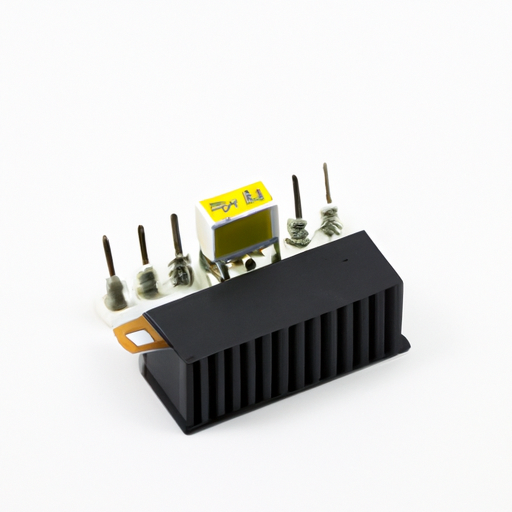

Title: A Comprehensive Guide to Popular Signal Converter Models

1. Analog to Digital Converters (ADCs) (200 words) Analog to Digital Converters (ADCs) are essential devices that convert continuous analog signals into discrete digital representations. They are commonly used in applications such as data acquisition, audio recording, and sensor interfacing. Popular ADC models include the Successive Approximation Register (SAR) ADC, Delta-Sigma ADC, and Pipelined ADC. Each model has its unique advantages, such as high resolution, low power consumption, or high-speed conversion, making them suitable for specific applications.
2. Digital to Analog Converters (DACs) (200 words) Digital to Analog Converters (DACs) perform the opposite function of ADCs, converting digital signals into continuous analog signals. DACs are widely used in audio systems, video playback, and control systems. Some popular DAC models include the Binary-Weighted DAC, R-2R Ladder DAC, and Sigma-Delta DAC. These models differ in terms of resolution, linearity, and speed, allowing users to choose the most appropriate DAC for their specific requirements.
3. Protocol-Specific Converters (300 words) Protocol-specific converters are designed to convert signals between different communication protocols, enabling interoperability between devices that use different standards. These converters are commonly used in industrial automation, telecommunications, and networking applications. Some popular protocol-specific converters include RS-232 to RS-485 converters, USB to Ethernet converters, and HDMI to VGA converters. These models facilitate seamless communication between devices that operate on different protocols, ensuring compatibility and efficient data transfer.
4. Universal Serial Bus (USB) Converters (300 words) USB converters are widely used to connect devices with different interfaces to a computer or other USB-enabled devices. These converters allow users to connect legacy devices, such as printers, keyboards, and mice, to modern computers that lack the corresponding ports. Popular USB converters include USB to Serial converters, USB to Parallel converters, and USB to PS/2 converters. These models provide a convenient solution for users who need to connect older devices to newer systems.
5. Fiber Optic Converters (200 words) Fiber optic converters are essential for converting signals between electrical and optical domains. They are commonly used in telecommunications, networking, and industrial applications. Popular fiber optic converter models include media converters, which convert signals between copper and fiber optic cables, and wavelength converters, which enable signal transmission across different wavelengths. These converters ensure reliable and high-speed data transmission over long distances, making them ideal for applications that require secure and efficient communication.
Conclusion (100 words) Signal converters are indispensable devices that bridge the gap between different signal types, enabling seamless communication and interoperability between devices. In this article, we explored some of the popular signal converter models available in the market today. From analog to digital converters, digital to analog converters, protocol-specific converters, USB converters, to fiber optic converters, each model serves a specific purpose and offers unique features and benefits. By understanding the capabilities and applications of these signal converter models, users can make informed decisions when selecting the most suitable converter for their specific needs.
Title: A Comprehensive Guide to Popular Signal Converter Models

1. Analog to Digital Converters (ADCs) (200 words) Analog to Digital Converters (ADCs) are essential devices that convert continuous analog signals into discrete digital representations. They are commonly used in applications such as data acquisition, audio recording, and sensor interfacing. Popular ADC models include the Successive Approximation Register (SAR) ADC, Delta-Sigma ADC, and Pipelined ADC. Each model has its unique advantages, such as high resolution, low power consumption, or high-speed conversion, making them suitable for specific applications.
2. Digital to Analog Converters (DACs) (200 words) Digital to Analog Converters (DACs) perform the opposite function of ADCs, converting digital signals into continuous analog signals. DACs are widely used in audio systems, video playback, and control systems. Some popular DAC models include the Binary-Weighted DAC, R-2R Ladder DAC, and Sigma-Delta DAC. These models differ in terms of resolution, linearity, and speed, allowing users to choose the most appropriate DAC for their specific requirements.
3. Protocol-Specific Converters (300 words) Protocol-specific converters are designed to convert signals between different communication protocols, enabling interoperability between devices that use different standards. These converters are commonly used in industrial automation, telecommunications, and networking applications. Some popular protocol-specific converters include RS-232 to RS-485 converters, USB to Ethernet converters, and HDMI to VGA converters. These models facilitate seamless communication between devices that operate on different protocols, ensuring compatibility and efficient data transfer.
4. Universal Serial Bus (USB) Converters (300 words) USB converters are widely used to connect devices with different interfaces to a computer or other USB-enabled devices. These converters allow users to connect legacy devices, such as printers, keyboards, and mice, to modern computers that lack the corresponding ports. Popular USB converters include USB to Serial converters, USB to Parallel converters, and USB to PS/2 converters. These models provide a convenient solution for users who need to connect older devices to newer systems.
5. Fiber Optic Converters (200 words) Fiber optic converters are essential for converting signals between electrical and optical domains. They are commonly used in telecommunications, networking, and industrial applications. Popular fiber optic converter models include media converters, which convert signals between copper and fiber optic cables, and wavelength converters, which enable signal transmission across different wavelengths. These converters ensure reliable and high-speed data transmission over long distances, making them ideal for applications that require secure and efficient communication.
Conclusion (100 words) Signal converters are indispensable devices that bridge the gap between different signal types, enabling seamless communication and interoperability between devices. In this article, we explored some of the popular signal converter models available in the market today. From analog to digital converters, digital to analog converters, protocol-specific converters, USB converters, to fiber optic converters, each model serves a specific purpose and offers unique features and benefits. By understanding the capabilities and applications of these signal converter models, users can make informed decisions when selecting the most suitable converter for their specific needs.